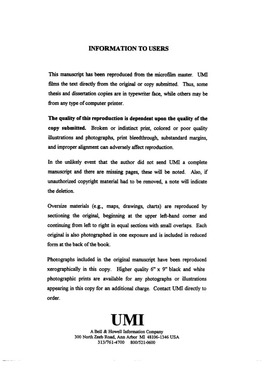| dc.contributor.author | Scoufos, Lucretia Chapman. | en_US |
| dc.date.accessioned | 2013-08-16T12:29:37Z | |
| dc.date.available | 2013-08-16T12:29:37Z | |
| dc.date.issued | 1997 | en_US |
| dc.identifier.uri | https://hdl.handle.net/11244/5479 | |
| dc.description.abstract | The data here results from the literatures and comparative analyses of information collected from field observations; medical health records and mental health records and mental health records of battered and non-battered women; and in-depth interviews with physicians, battered and non-battered women, administrators, medical interns, a medical student, medical personnel, a social worker and attorneys-at-law. One implication is that each physician uses the same method to attend to all patients' medical records, including those of battered women. Further, based on their ethics, education, training and potential litigation, together with their reading audiences, some physicians choose to record all patient information in their records; based on the same reasons, other physicians choose not to record all patient information. However, both groups believe they are acting in their patients' best interest. | en_US |
| dc.description.abstract | Thus, the data generated here substantiates Garfinkel's (1997) assumptions that normal, natural troubles occur as a result of members in a certain group doing the right things for the right reasons and in keeping with the members' training and education. While physicians, their procedures for doing battered women's medical records in the ways that they were taught sometimes create the problems for which they are being criticized. | en_US |
| dc.description.abstract | The purpose of the present study is to analyze the communication processes and rationale used by physicians when reading and writing medical records of women battered by intimate male partners. Grounded in the theoretical framework of Garfinkel (1967) and based upon ethnographic research methods, this dissertation addresses the criticism that physicians sometimes receive about their techniques when attending battered women's medical records. This research also addresses the need for health communication scholars to utilize medical records as a significant resource for studying communication processes. | en_US |
| dc.description.abstract | The overview of this data is that physicians have universal methods for reading and writing medical records for all patients. Although they do not agree on what to enter in their records, all physicians in this research voice concern for effective treatment and intervention for battered women. The battered women and the narratives told by both the physicians and their patients substantiate the physicians position. | en_US |
| dc.format.extent | xvi, 359 leaves ; | en_US |
| dc.subject | Social medicine. | en_US |
| dc.subject | Abused women Medical care. | en_US |
| dc.subject | Physician and patient. | en_US |
| dc.subject | Women's Studies. | en_US |
| dc.subject | Information Science. | en_US |
| dc.subject | Medical ethics. | en_US |
| dc.subject | Medical records. | en_US |
| dc.subject | Health Sciences, Health Care Management. | en_US |
| dc.title | How physicians do medical records for women battered by intimate male partners. | en_US |
| dc.type | Thesis | en_US |
| dc.thesis.degree | Ph.D. | en_US |
| dc.thesis.degreeDiscipline | Department of Communication | en_US |
| dc.note | Source: Dissertation Abstracts International, Volume: 58-03, Section: A, page: 0619. | en_US |
| ou.identifier | (UMI)AAI9726708 | en_US |
| ou.group | College of Arts and Sciences::Department of Communication | |
